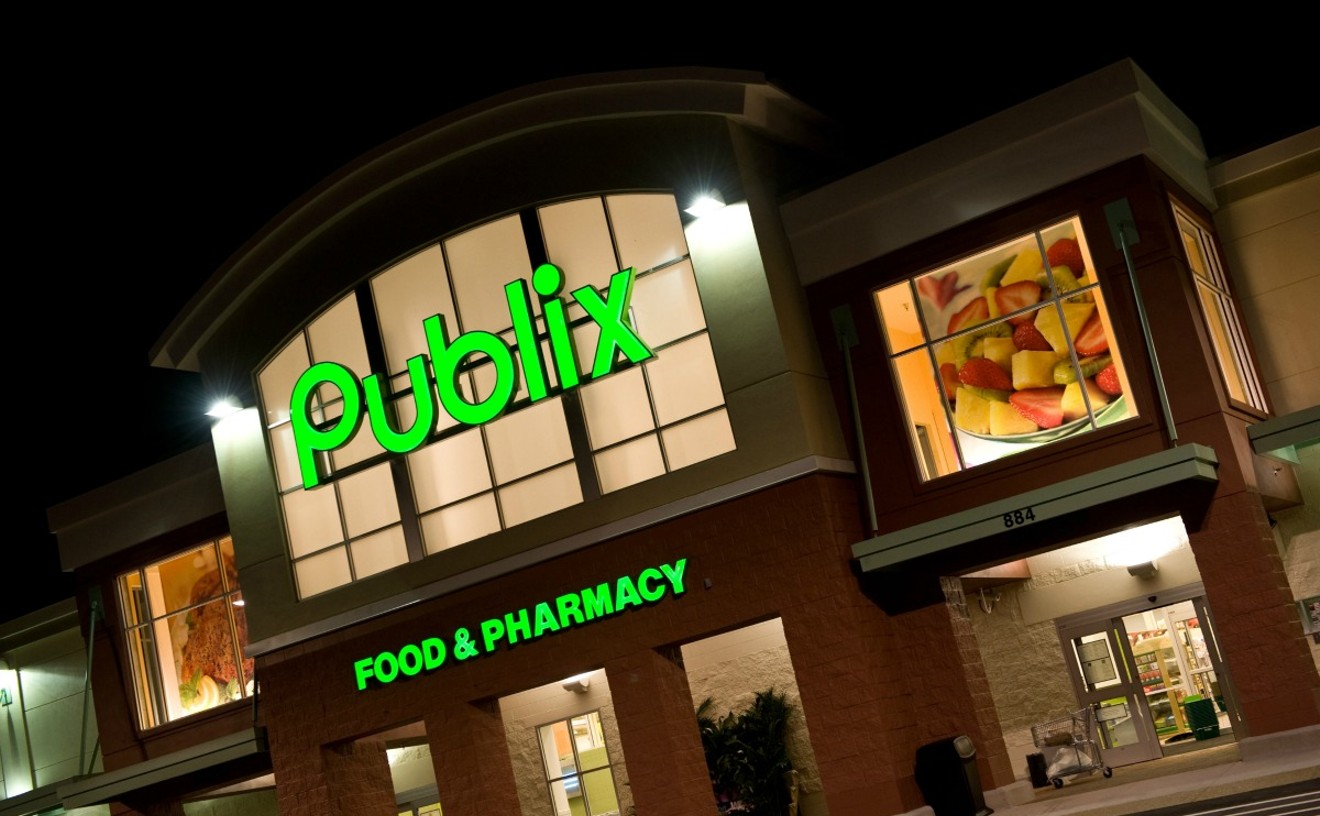Kimmi is a smart girl. But not because raw quivering cow brains are heavy on the scale of too-gross-for-words. Rather Kimmi was clever enough to avoid the one item on that day's menu that could have killed her.
Cow brains carry mad cow disease. A lot of us sort of vaguely know what that is: You eat cattle that's been contaminated somehow, and it makes you crazy and kills you in the long run. Some of us remember the mad cow panic in Great Britain during the early- to mid-Nineties, and a few of us have been following the news now, which largely reports on the development of cases in France and other parts of Europe.
More than 150 cases of mad cow disease have been reported in French cattle for the year 2000, with another 29 so far in 2001. Ireland and Portugal have similar numbers. Britain leads the pack -- or herd -- with 1344 reported in 2000 and 27 in 2001. (In total 180,802 cows have been diagnosed since 1987; 177,706 have been found in Great Britain alone.) Germany, Denmark, Italy, and Spain have all seen cases develop within the past three years, where previously there were none. Better screening practices are being cited for the seemingly astronomic increase. But the American public generally considers mad cow disease, as Norman Van Aken, chef-proprietor of Norman's, notes, a "European problem."
He's right. That's how blithe Americans think of mad cow. But in fact it's not just a European problem any longer. It's a world problem. And as diagnoses of new cases in cattle spring up in Asian nations ranging from Malaysia to Thailand, it becomes clear that every country is at risk. The United Nations Food and Agriculture Organization (FAO) has announced that "at least 100 countries are at risk from mad cow disease because they imported cattle or MBM [meat-and-bone meal] in the late 1980s and 1990s."
Indeed England, where the disease originated, exported cattle remains to be used as food until just a few years ago, despite banning such a practice concerning its own cattle in 1986. Now Lebanon and South Korea, both nations that have imported live cattle or animal feed from Great Britain before 1996, are experiencing declines in the meat and dairy industries -- declines, it might be noted, that are fueled solely by panicked rumors.
Mad cow disease, or bovine spongiform encephalopathy (BSE), is a member of the family of transmissible spongiform encephalophathies (TSE), a group of acquired and occasionally hereditary diseases in humans and animals alike that causes irreversible brain damage and eventually leads to death. In humans the most common TSE, according to the World Health Organization, is Creutzfeldt-Jakob disease (CJD). The infectious agent of BSE, once transmitted to humans, results in what scientists are calling new-variant or variant CJD (vCJD).
The reason why vCJD is so scary is because the infectious agent is not a bacteria, virus, or fungi. It is something called a prion, an abnormal protein that, once it enters the body, acts like a cult leader; other, formerly normal proteins twist and adapt themselves in order to become like the prion. Basically we have no natural defenses against prions, and currently there is no cure or vaccine. There's not even a treatment for symptoms. Prions have no DNA, and yet they can still reproduce; they also survive sterilization techniques, radiation, and alcohol immersion. In short you can't cook mad cow disease away like you can salmonella. You can't freeze it to death like parasites in raw fish. Prions are way too stable for that.
In fact more remains unknown about vCJD than known. The infective dose -- how much one needs to consume in order to develop vCJD -- is a big mystery. The incubation period, also somewhat uncertain, is thought to be long enough that it has not yet been determined just how many people have been affected by the first outbreak in 1995. The disease kills within two years once symptoms appear and has been described as a fast-acting Alzheimer's. Victims first suffer memory loss and inability to reason, then lose motor control. Within six months most of those infected with the disease no longer can walk or feed themselves.
Interestingly what is known is how vCJD was initially transmitted. The cows seem to have acquired the disease via sheep infected with scrapie, another prion disease. Not carnivores by nature, the cattle were fed the remains of infected sheep, and the rest is epidemiologic history. Even so, it was at first assumed that BSE could not cross the bovine-human species barrier. But to date, about 90 people have contracted the disease.
Researchers have discovered that BSE-infected milk and beef will not necessarily cause vCJD. The Website for the University of Illinois at Champaign-Urbana notes that "with the exception of the brain and spinal cord, and more recently, the retina, all tissues and secretions from confirmed BSE cattle have failed to transmit the disease when injected into or fed to mice." In other words the nervous system, of which the retina is really a piece, is the most highly "contagious" cow part. Which makes sense, since the prions attack the nervous system in cows and humans alike. "Theoretically the greatest risk to man would be by direct infection through injection of products derived from bovine brain or lymphoid tissue," the site concludes.
Wise Kimmi. Or is she? Although Australia (where Survivor II was filmed) may currently be "safe" from mad cow, and Kimmi refused to consume bovine brain, she may have received a blood transfusion from someone who lived in Europe, though it is not clear that prions are transmitted via blood. Or maybe she has ingested a German-made Mamba fruit chew, which is based on a beef-based gelatin. She could even be at risk from, say, her makeup or herbal supplements that, the New York Times reported a couple of weeks ago, could contain "brains, testicles, tracheas and glands from cows and other animals."
At least so say the alarmists, who are comparing the possible vCJD outbreak to the AIDS epidemic. About 250 Websites are solely dedicated to debunking (or fueling, depending on how you look at such things) the myths about mad cow. The truth is only a few nuggets of valid information are known about how vCJD is transmitted from cow to human or from human to human. The former could be controlled if the disease is eradicated in cattle. (To that end feeds containing MBM are banned in the United States and elsewhere, but perhaps the bans aren't enforced as stringently as they should be; see next week's installment.) The latter is probably where the real danger lies.
An immeasurable number of AIDS cases was transmitted long before the disease was even recognized. In the case of BSE, the Independent reported the British government realized in 1995 that the disease posed a real threat to humans, and the nation suppressed the information for at least six months. The first case of BSE was diagnosed in a cow in 1986, but the disease was not believed to be dangerous to other species (i.e., people). Therefore the government had carried out only token enforcement of slaughterhouse and feed-lot regulations concerning MBM. The delay in 1995, the government was forced to admit in official documents, was caused by emergency enforcement of the rules, so that all abattoirs would appear to have been conformant all along when the devastating news was announced.
The end result is that many humans could be harboring and transmitting the disease without knowing it. Neurologists say that regular CJD could be acquired from growth hormone (from the pituitary gland), which bodybuilders inject, or from retinal transplants. It is not clear whether the damaged prions could be transmitted via blood, but the United States, where no BSE or vCJD has yet been discovered, is taking no chances.
According to the Associated Press, the "government will soon ban certain frequent travelers to France and Portugal from donating blood as a precaution against mad cow disease." In addition the FDA, which already has forbidden donations by anyone who spent "a total of six months in Britain between 1980 and 1996," is going to prohibit donations from anyone who has resided in France or Portugal for a total of ten years since 1980. The Red Cross is almost certainly going to refuse blood from volunteers who have lived in Britain for three months or Europe for a year. Yet these precautions may be not only useless but inflammatory.
For one thing you definitely diagnosis BSE and vCJD with brain biopsies, which can occur only after death. Tests are expensive, and screening practices and surveillance techniques are provincial in many countries. Cattle ranchers in some places are deliberately ignoring dangers, while a few governments are denying or refusing to hand over information concerning the possibility of mad cow disease in their nations. Paranoid readers would do better to concentrate their fears here rather than on possibly contaminated blood supplies. But we focus on the blood, say disease researchers, because this is what we have learned from AIDS, a retrovirus that is not at all similar to prions.
No doubt Survivor II producers have experienced backlash from animal rights groups for the pressure on contestants to consume carnivorous products. These same groups, like the religious right concerning the AIDS epidemic, are smug in their beliefs that meat-eaters finally are getting what they deserve. But unless that cow brain was tested before landing on Kimmi's plate, the Survivor II producers may have unwittingly exposed the cast to a fatal illness. Forget lawsuits launched by former contestants over whether their ejections from the show were rigged. Never mind clauses and contracts signed by the contestants, saying they fully understand the risks to their persons. Mad cow disease causes the kind of panic that, like a fire in a movie theater, more often than not results in a stampede.
Next week: How susceptible is the United States, and what are the implications for our global foods and economy?










